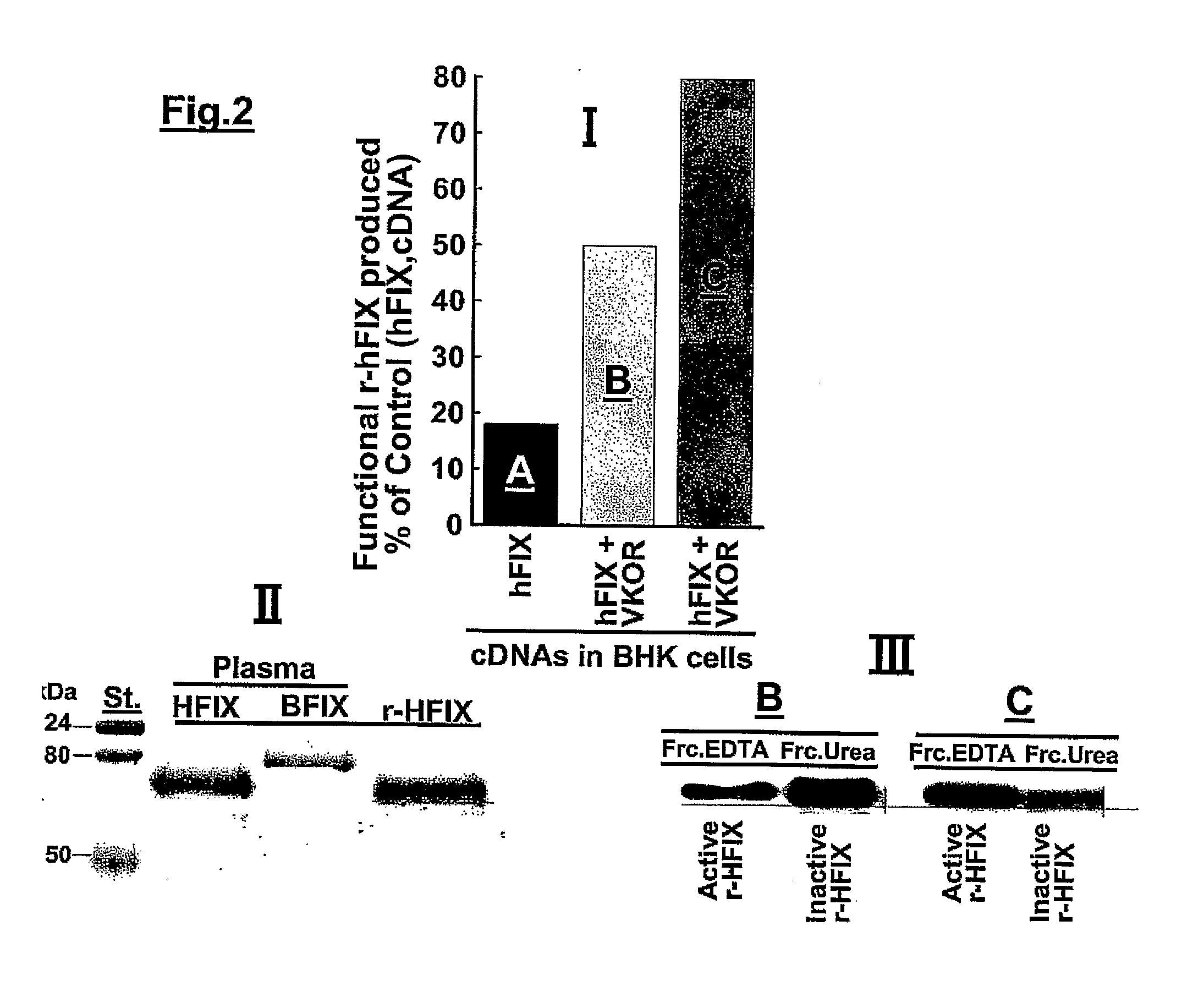Compositions and Methods for Increasing Production of Recombinant Gamma-Carboxylated Proteins
a technology of gamma-carboxylated proteins and gamma-carboxylated proteins, which is applied in the field of genetically engineered cell lines, can solve the problems of poor recovery and poor recovery of functional proteins in cell medium, and achieve the effect of increasing the production of gamma-carboxylated proteins and enhancing yield
- Summary
- Abstract
- Description
- Claims
- Application Information
AI Technical Summary
Benefits of technology
Problems solved by technology
Method used
Image
Examples
example
Cell lines for improving production yield of hFIX
[0058]The following materials and methods are provided to facilitate the practice of Example 1.
Engineering of BHK Cell Lines Overexpressing r-hFIX and Proteins of the Vitamin K-Dependent γ-Carboxylation System:
[0059]Cloning of VKORC1 and γ-carboxylase cDNAs into the dual promoter vector plasmid pBUDCE4.1 (Invitrogen, Carlsbad, Calif.) and construction of the pLXIN retroviral vector (Clontech, Palo, Ca.) containing a human FIX construct as well as selection of clones of cells stably overexpressing the recombinant proteins are published in recent articles from our laboratory. As documented in the published studies (11, 17), it was found that BHK cells stably overexpressing r-hFIX and VKORC1 produced the highest amount of functional r-hFIX. These cells were selected for the studies described in this work.
Silencing of the γ-Carboxylation Inhibitor Calumenin in BHK Cells:
[0060]Hamster calumenin was cloned by our laboratory using standard t...
example 3
Increased Production of Factor VII
[0087]Cell lines that stably overexpress recombinant human factor VII and VKORC1 are currently being developed. A cDNA vector comprising human factor VII cDNA was purchased from Biochain. The complete factor VII cDNA encoding the protein was amplified via PCR and cloned into a pBUDCE4.1 dual vector (Invitrogen). The cDNA PCR product was sequenced on both strands and confirmed to have no sequencing errors. We transfected BHK cells with the factor VII vector and isolated recombinant factor VII protein which was secreted into the medium. We used BaCitrate to absorb gamma-carboxylated factor VII from the medium. Shown in FIG. 10 is a Western blot of recombinant factor VII in the medium and after its absorption onto BaCitrate, which is the conventional method used to absorb fully gamma-caroxylated, active vitamin K-dependent proteins from plasma and cell media. The specific activity of the BaCitrate absorbed protein had specific activity that was close t...
PUM
| Property | Measurement | Unit |
|---|---|---|
| nucleic acid | aaaaa | aaaaa |
| length | aaaaa | aaaaa |
Abstract
Description
Claims
Application Information
 Login to View More
Login to View More - R&D
- Intellectual Property
- Life Sciences
- Materials
- Tech Scout
- Unparalleled Data Quality
- Higher Quality Content
- 60% Fewer Hallucinations
Browse by: Latest US Patents, China's latest patents, Technical Efficacy Thesaurus, Application Domain, Technology Topic, Popular Technical Reports.
© 2025 PatSnap. All rights reserved.Legal|Privacy policy|Modern Slavery Act Transparency Statement|Sitemap|About US| Contact US: help@patsnap.com



